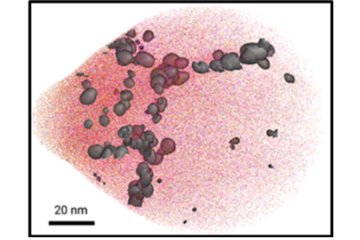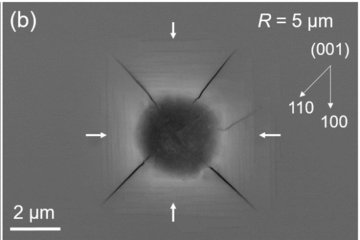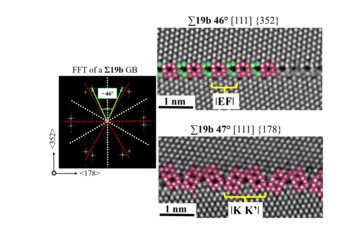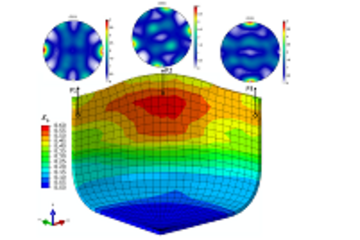All genres
1201.
Talk
Calibration of Atom Probe Tomography Reconstructions from Correlation with Electron Tomograms or Micrographs. APT&M 2018, NIST, Gaithersburg, MD, USA (2018)
1202.
Talk
An automated computational approach for extraction in-plane compositional information of interface in atom probe tomography dataset. APT&M 2018 conference, Gaitherburg, MD, USA (2018)
1203.
Talk
Correlative transmission Kikuchi diffraction and atom probe tomography analysis of grain boundaries in Cu(In,Ga) Se2 and CuInS2. E-MRS Spring Meeting 2018, Strasbourg, France (2018)
1204.
Talk
Correlative transmission Kikuchi diffraction and atom probe tomography analysis of grain boundaries in Cu(In,Ga) Se2 and CuInS2 in thin film solar cells. APT&M 2018, NIST, Gaithersburg, MD, USA (2018)
1205.
Talk
An improved unified internal state variable model exploiting first principle calculations for flow stress modeling of aluminium alloys. International Conference on Aluminum Alloys (ICAA), Montreal, Canada (2018)
1206.
Talk
Influence of microstructure of Ag16.7Sb30Te53.3 bulk thermoelectric on their performance. 1st International Meeting on Alternative & Green Energies (1st IMAGE'18), Mohammedia, Morocco (2018)
1207.
Talk
On the fatigue behavior of dual-phase high-entropy alloys in the low-cycle fatigue regime. Fatique 2018, Poitiers, France (2018)
1208.
Talk
Design eines Fe–Ni–Ti–Al Maraging Stahls optimiert für in-situ Ausscheidungshärtung während des Laserauftragschweißens. Fachtagung Werkstoffe und Additive Fertigung, Potsdam, Germany (2018)
1209.
Talk
Chemo-Mechanics in Metallic Alloys. 16th Edition of the European Mechanics of Material Conference, Nantes, France (2018)
1210.
Talk
DAMASK – From Crystal Plasticity to Multi-Physics. Seminar Materials Science and Engineering University of California, Los Angeles, CA, USA (2018)
1211.
Talk
Observing Solute Hydrogen and Hydride in Ti alloys by Atom Probe Tomography. TMS 2018, 147th Annual Conference, Phoenix, AZ, USA (2018)
1212.
Talk
Direct Observation of Hydrogen in Ti Alloys by Atom Probe Tomography. TMS 2018 Annual Meeting & Exhibition, Phoenix, AZ, USA (2018)
1213.
Talk
Segregations at defects and interfaces and their relations to properties. TMS 2018, annual Meeting & Exhibition, Phoenix, AZ, USA (2018)
1214.
Talk
The role of systematic characterization on the development of new nickel-based superalloys. Industrial Colloquium - SFB/TR 103 „From Atoms to Turbine Blades“ , Fürth, Germany (2018)
1215.
Talk
Designing Fe–Ni–Al and Fe–Ni–Ti Maraging Steels for In-situ Precipitation Hardening During Laser Metal Deposition. TMS2018 Annual Meeting & Exhibition, Phoenix, AZ, USA (2018)
1216.
Talk
Preventing the Coarsening of Al3Sc Precipitates by the Formation of a Zr-rich Shell During Laser Metal Deposition. TMS2018 Annual Meeting & Exhibition, Phoenix, AZ, USA (2018)
1217.
Talk
Precipitation of CFCC-TmC Carbides during Tempering at 450°C of a Medium Mn Steel: A Thermodynamic and Kinetic Study Followed by Atom Probe Tomography. TMS 2018 Annual Meeting & Exhibition, Phoenix, AZ, USA (2018)
1218.
Talk
Physical Metallurgy of Segregation and Austenite Reversion in Medium Mn Steels. TMS 2018 Annual Meeting & Exhibition, Phoenix, AZ, USA (2018)
1219.
Talk
Unusual interstitial strengthening of high-entropy alloys evading the strength-ductility trade-off. TMS 2018 Annual Meeting & Exhibition, Phoenix, AZ, USA (2018)
1220.
Talk
Carbon and Nitrogen Co-doping in an Equiatomic High-entropy Alloy. TMS 2018 Annual Meeting & Exhibition, Phoenix, AZ, USA (2018)











